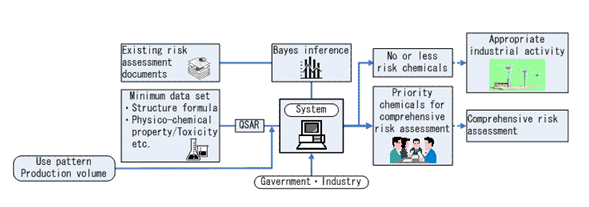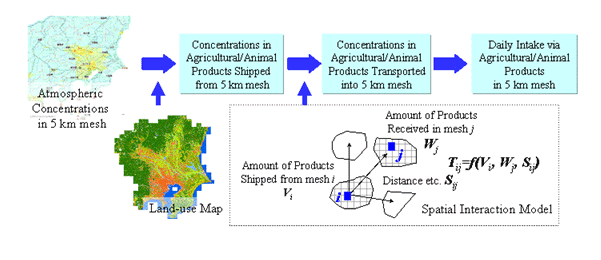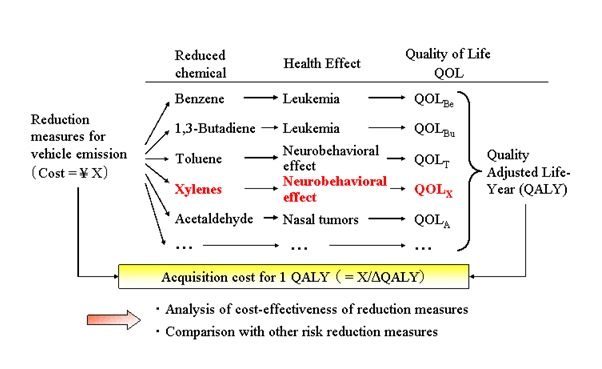The Risk Analysis Team (RAT) consists of nine staff members (four researchers, two post doctoral fellows, and three technical assistants) with Dr. Kikuo Yoshida as the team leader.
The major research activities of the RAT are the development of several elemental methodologies required to assess and manage risks of environmental chemical substances and their applications to manage human health risks of existing and new chemical substances.
We are exposed to a number of chemical substances with various types of toxicity via several pathways. In order to assess risks caused by simultaneous exposures to such chemical substances, it is necessary to develop the following versatile methods anew in addition to those used to assess the risks of individual chemical substances:
ü×method to identify the critical exposure pathways and to evaluate multi-exposure of target chemical substances comprehensively;
ü×method for screening the risks of various kinds of chemical substances with different amount of information required for the assessment; and
ü×method to assess and manage the risks caused by a number of chemical substances, based on a unified scale
Current Research Topics
1) Method for Screening Human Health Risk from Minimum Data Set
Human is simultaneously exposed to a number of chemical substances via several pathways. Although the current assessment methods require various types of data, there are not many chemical substances satisfying all the data requirements in risk assessment processes. For this reason, it is desired to establish a method for screening human health risk from minimum existing data set.
The RAT has started to develop such a method, in which QSPR (Quantitative Structure-Property Relationship) approaches are used to fill the gap of elementary physico-chemical property data, and the Bayesian inference is used to assure accuracy of estimates.

Figure 1. Concept of Method for Screening Risk from Minimum Data Set
ü@
2) GIS-Based System for Refining Spatio-specific Exposure and Risk Assessment
Many chemical substances are ingested orally to human via agricultural, animal and fishery products. For adequate assessment of exposure and risk of such chemical substances, it is necessary to know concentrations of chemical substances in these products consumed in each area.
This is carried out by estimating spatial distribution of concentrations in products and identifying the major transport routes of each product from the producing area to the consuming area. The RAT is developing a system to estimate oral intake of chemical substances for residents in 5 kmü~5 km mesh, using a spatial interaction model as well as land use data.

Figure 2. GIS-Based System for Refining Exposure and Risk Assessment
3) Method for Comprehensive Risk Assessment of Simultaneously Exposed Chemical Substances
In the risk assessment process for xylenes, simultaneously exposed xylenes and their related chemical substances such as toluene, benzene, etc. are evaluated to assess multiple risks of chemical substances released from mobile emission sources and indoor sources.
Also, the cost-effectiveness of reduction measures of hazardous chemical substances for vehicle emission and indoor air pollution will be analyzed, using quality adjusted life-year (QALY) as a unified scale.

Figure 3. Comprehensive Risk Assessment of Simultaneous Exposure to Xylenes and Their Related Chemical Substances
ü@
ü@